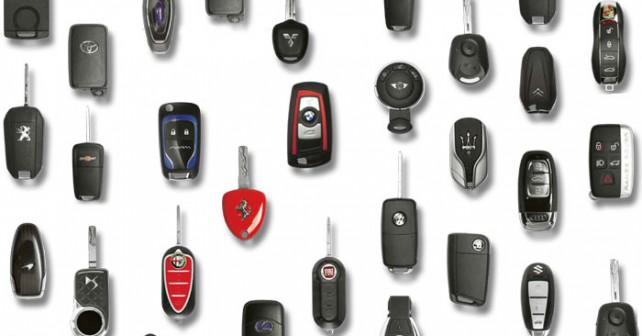
From a simple tool used for opening doors and starting the engine to a device that memorizes vehicle data and driver preferences – seat position, favourite music, etc., here’s the CV of this small, but crucial, object.
Now it even reveals how many kilometres are left until the next service, and it tells us how many litres are left in the fuel tank. It’s a sort of portable memory of your car. And yet we continue to call it a simple ‘key’, taking it with us in the same nonchalant, careless way as before – when all it did was open doors and start the ignition. As with other things that have changed our lives, such as smart phones and the Internet, we take it for granted – along with all the increasingly numerous and complex functions it performs.
This little thing we carry in our pocket is already a hundred years old – though it hardly shows. Although the first ‘modern’ system – with a key that turns in the keyhole – is attributed to the Chryslers of the late 40’s, the electrical ignition (precursor of this small indented, metallic instrument) can be traced back to 1910. The first to introduce it were people from Cadillac, and the story goes that it all began with a fatal accident. A certain Byron Carter was killed by a crank handle – this is how cars started back then – that projected out from the seat while he was gallantly assisting a young lady whose own Cadillac had stalled. It just so happened that the man was a good friend of the then president of the automaker, Henry M. Leland, who, following the tragedy, pressured his engineers to find less complicated and dangerous alternatives. Whatever the accuracy of the story, the crank handle eventually ended up in the attic in favour of a new, more practical, system, which, in general, worked by simply activating a switch with or without the help of a key. At the time, the long career of that small metallic object must have been unfathomable to its creators. Today, it hardly retains any of its metallic ethos. The casing is a shell of plastic material, its heart being a microchip that not only facilitates the usual lock-unlock functions of the doors, but also talks with the vehicle. Its evolution has been swift. It was as recently as the beginning of the 80’s when we started seeing the spread of the first electronic burglar alarm remote control that permitted the long-distance activation of the centralized locking system. Then, from the first integrated devices with the lock-unlock button on the head of the key, we reached the revolution of the ‘passive keyless entry.’ In other words, who cares if your hands are occupied with shopping bags or luggage, all you have to do is get close, touch the handle, and the doors unlock – as if the car recognized its master, like a tail-wagging dog. The system, developed by Siemens, debuted in Europe under Mercedes. From then on, it caught on like wildfire – among the first budget manufacturers to scale up were Nissan and Renault. Later, with the addition of certain functions, keys also became ‘smart.’
The shape has also changed
As expected, the evolution of functions was accompanied by an aesthetic transformation – today keys are objects of design. Some still require the insertion of a serrated metal blade, which, at rest, is folded in the casing like a switchblade. Others are tiny plastic boxes or simple rigid cards, and they are inserted directly into the dashboard. Others still use radio frequencies not only to access the car, but also to start the ignition – which happens by keeping the keys in one’s pockets and pressing a button on the dashboard. In every case, the key almost always forfeits the traditional design in favour of free forms – the case of the current Porsches is particularly striking as it stimulates the profile of a miniature car. Naturally, there is still a removable metallic core to be used in case of an emergency, or to lock the trunk and glovebox before handing the car over to the valet. Once closed manually, these locks cannot be unlocked by electronic keys.
Of whatever shape they may be, the last frontier for the smart key is that of memorizing the on-board functions – useful, for example, when the car is brought in to service. The engineer inserts the key into a reader, and, in a single shot, retrieves the necessary data – from the vehicle’s VIN number, to the mileage, to the maintenance intervals. Some keys are able to ‘remember’ different customized parameters of the driver – seat position, preferred radio stations, the car’s dynamic option selection. Exploiting these possibilities, Ford proposes a double set, called ‘My Key’ – a master key (for the usual adult driver), and a second one made perhaps for the newly-licensed novice, limiting max speed and impeding the switching off of the ESP, while also placing an upper limit on radio volume. The last glimpse comes from Sweden – Volvo has provided the S80 and the XC70 with a key that receives a signal when a heartbeat is detected on the seat – in other words, it tells you from afar if someone has snuck in to your car or if you forgot your baby in the cabin (we know from the news that it happens).
© Riproduzione riservata


















Write your Comment